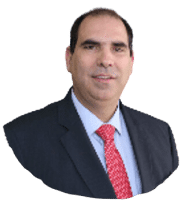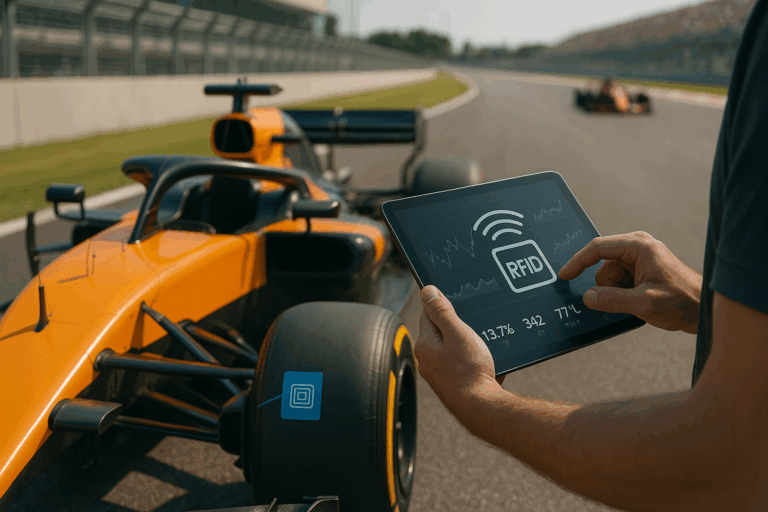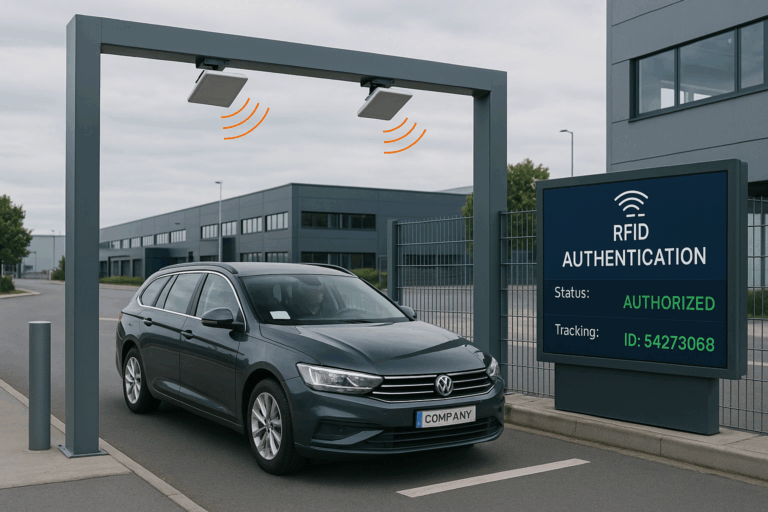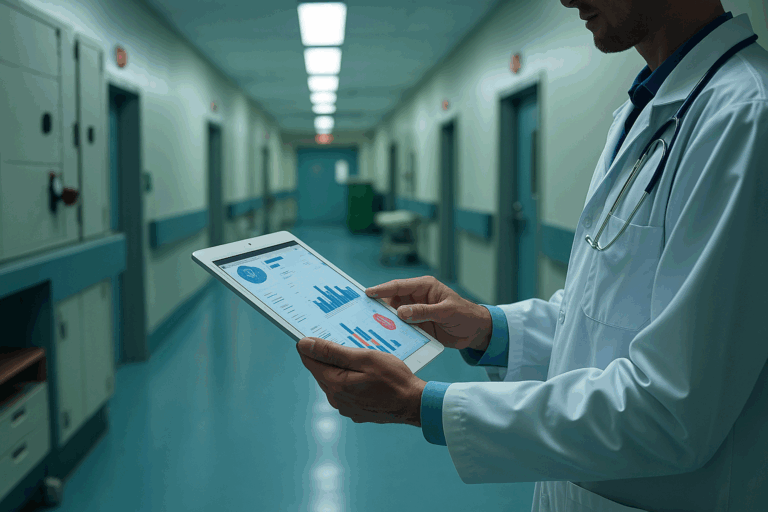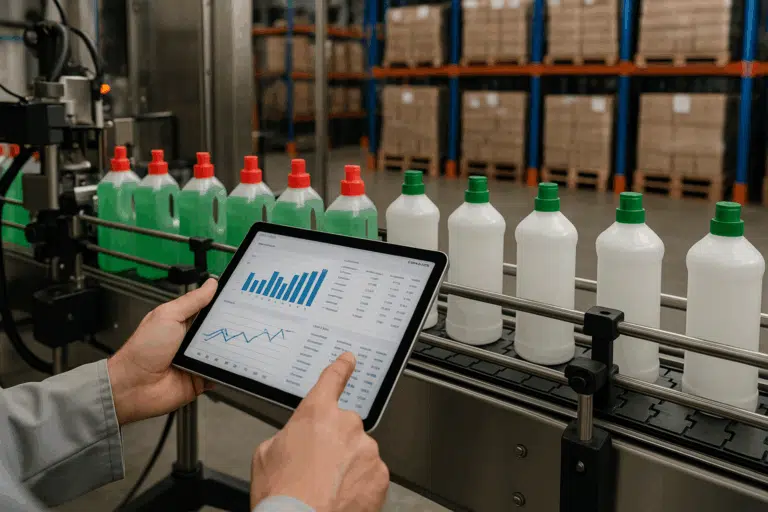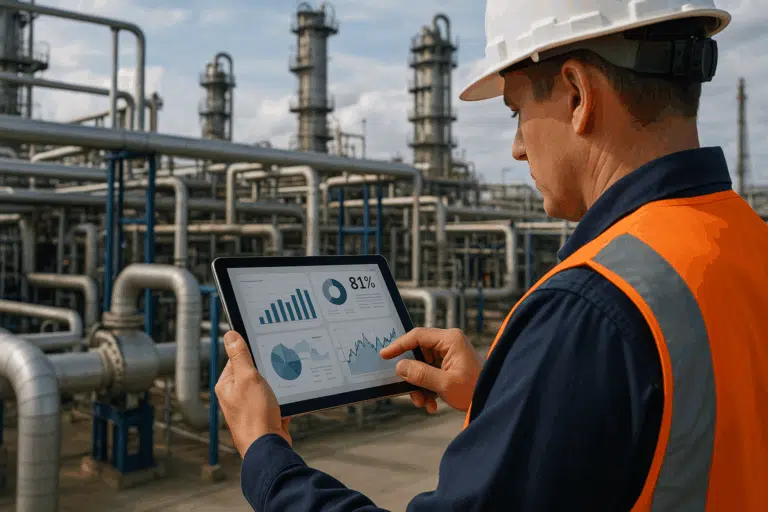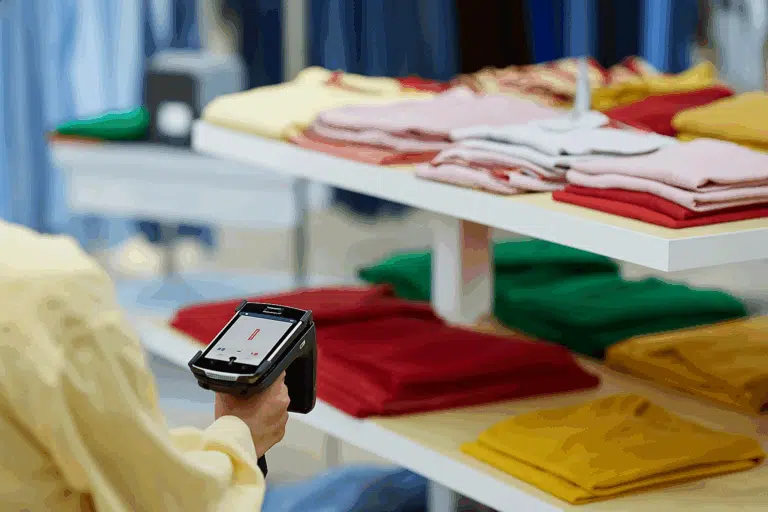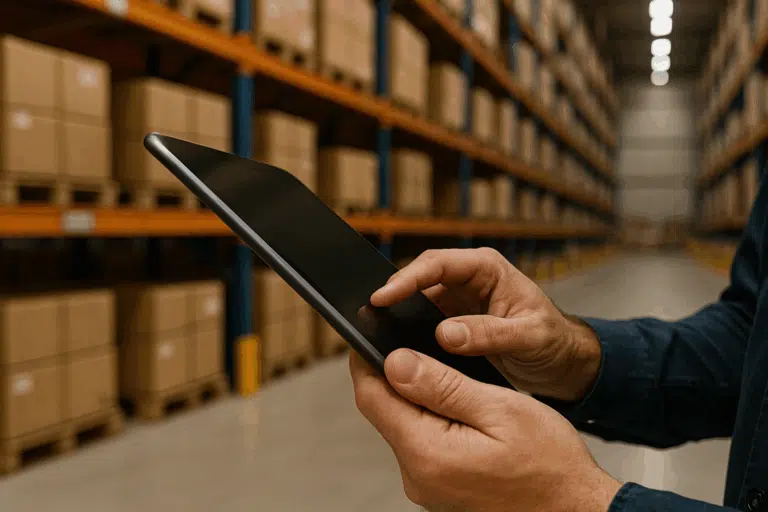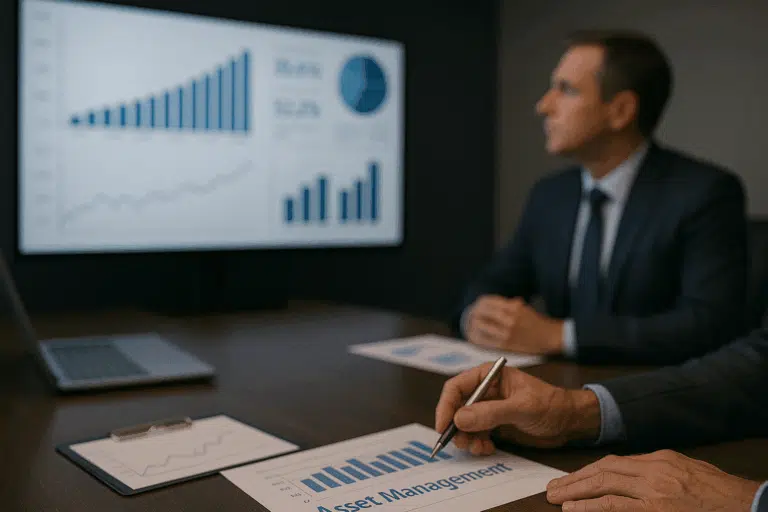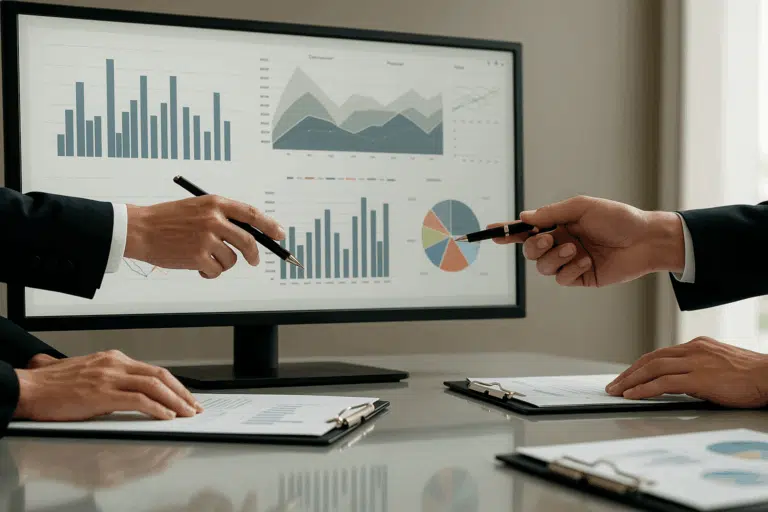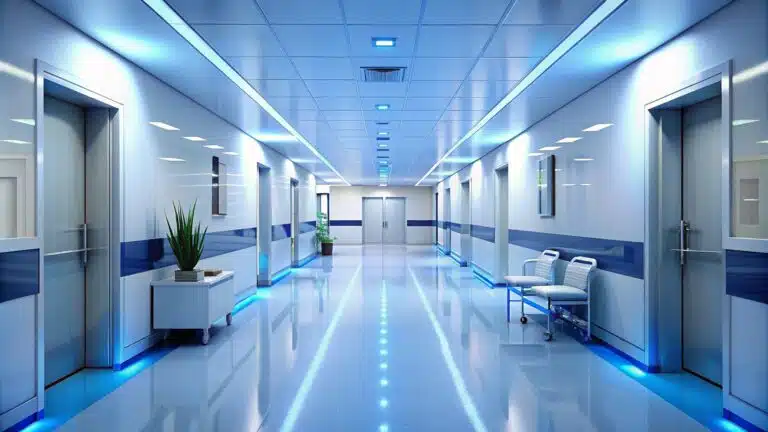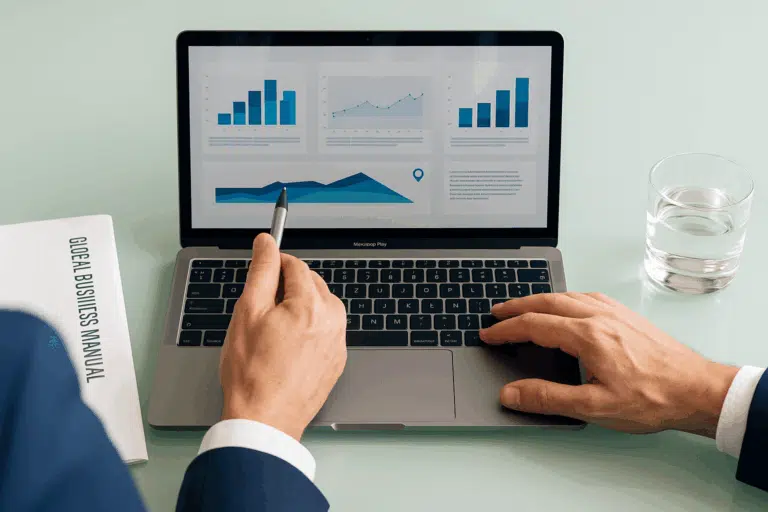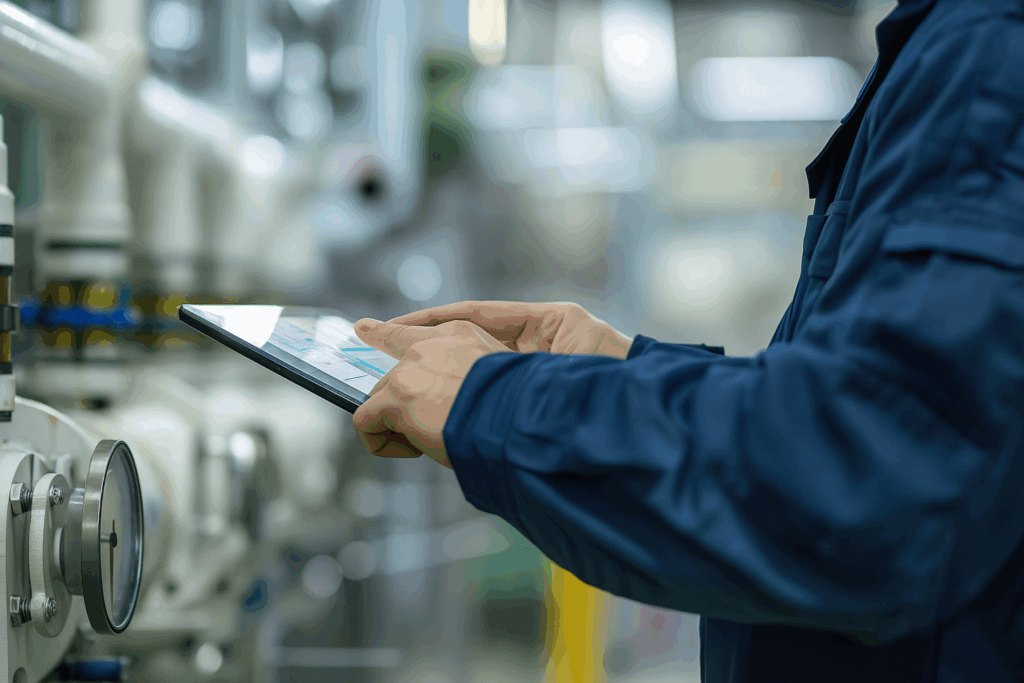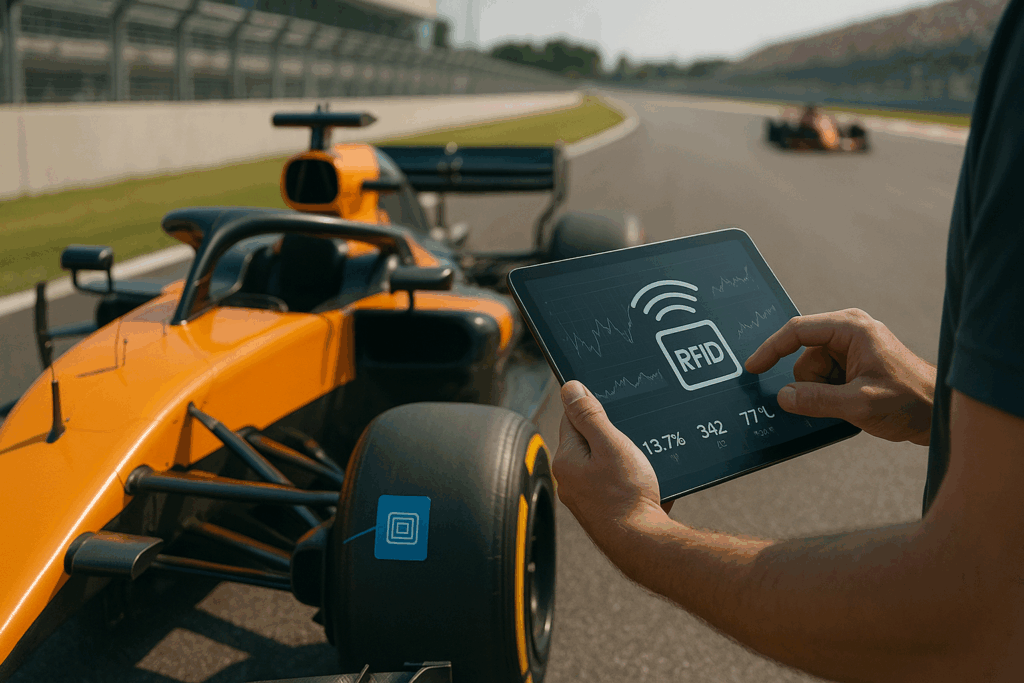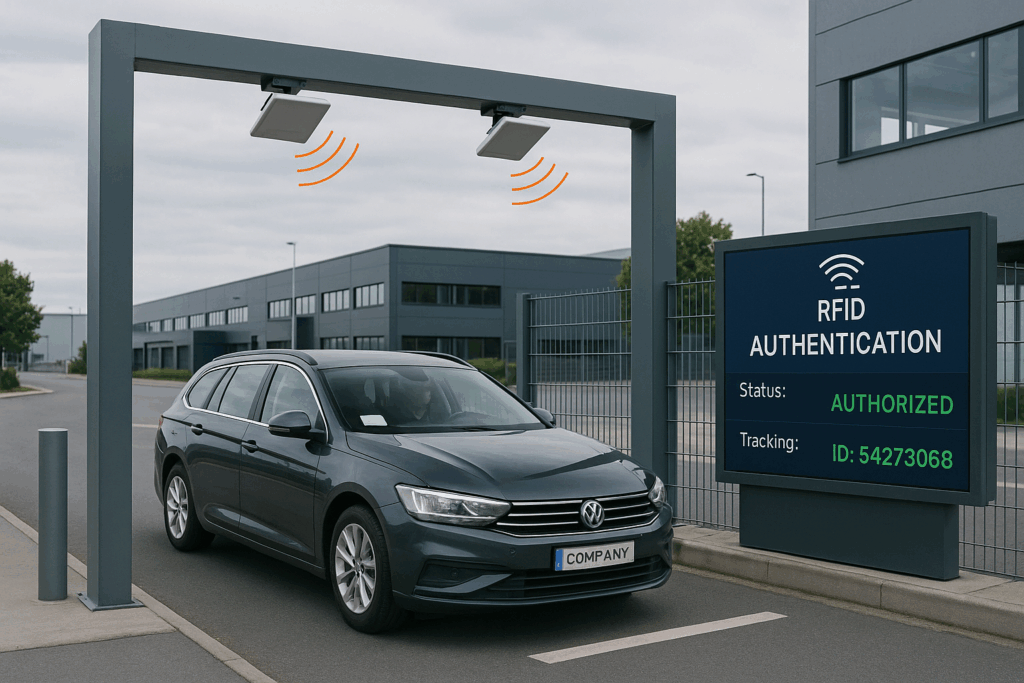Ever thought about how hospitals keep up with their many medical tools and assets? They handle thousands of items, making tracking them key for smooth operations and caring for patients. At CPCON, we get the hurdles healthcare places face in managing their assets well.
Asset tracking has changed the game for hospitals. It helps them work better and care for patients more effectively. With tech like real-time location systems (RTLS) and radio frequency identification (RFID), hospitals can track their items and their condition right away. This cuts down on lost or stolen equipment and boosts how well things are used and maintained.

Putting a full asset tracking system in hospitals can save a lot of money and make things run smoother. It lets hospitals use more time for patient care and save millions by managing their assets better.
Table of Contents
ToggleKey Takeaways
- Effective asset tracking is key for keeping hospitals running well and caring for patients
- RTLS and RFID tech let hospitals track medical equipment and assets in real-time
- Tracking assets cuts down on loss, boosts how things are used, and makes maintenance better
- Adding a full asset tracking system can save a lot of money and improve patient care
- CPCON offers custom asset tracking solutions to help hospitals manage their assets better
The Importance of Asset Tracking in Healthcare
We at The CPCON Group know how vital asset tracking is in healthcare. With over 25 years of experience, we’ve seen how hard it is for hospitals to manage their assets well. In 2018, the UK spent £214 billion on healthcare, showing how important it is to use asset tracking to save money and resources.
Challenges Faced by Hospitals in Asset Management
Hospitals need many different equipment and devices to take good care of patients. But, many of their tracking systems are old, not reliable, and make mistakes. This makes finding things take longer and costs more money. Hospitals lose about $4,000 worth of equipment per bed each year in the US because it gets stolen or lost.
There are so many devices and supplies in hospitals that tracking them by hand is risky. In fact, mistakes in tracking cost UK businesses £98.6 billion a year. Bad systems cause money losses and hurt patient care, satisfaction, and worker productivity. Finding medical devices late leads to buying too much, making things harder for hospitals.
Impact of Inefficient Asset Tracking on Patient Care
Poor asset tracking hurts more than just the wallet and work flow. It can slow down patient care, testing, or finding beds, making patients and staff unhappy and stressed. With NHS nurses seeing over 1 million patients every 36 hours, they need reliable asset tracking.
Using advanced systems like those from TEKTELIC can help hospitals fight theft, save money, and manage their inventory better. With RFID and RTLS, hospitals can see where their assets are in real time. This means equipment is always ready when needed, improving patient care and helping staff focus on their work.
At The CPCON Group, we see how healthcare iot solutions and rfid asset tracking can change things for hospitals. By using full medical equipment tracking and hospital inventory management systems, hospitals can work better, spend less, and help patients more. We’re always finding new ways to use technology to help hospitals manage their assets better and use their resources well.
How Asset Tracking Works in Hospitals
Asset tracking in hospitals is key to managing medical equipment and supplies well. It helps make sure everything is used right and patients get the best care. The market for this is big, expected to grow from $14.5 billion in 2023 to $69 billion by 2033. At CPCON Group, we offer top-notch fixed asset management and tracking software for healthcare.
Assigning Unique Identifiers to Assets
Tagging each item with a unique code is the first step in tracking. This can be a barcode, RFID tag, or IoT device. RFID tags are cheap, about $1.1 each, and work well in tough places. This way, hospitals can keep track of everything, cut down on loss, and make fixing things easier.
Tracking Asset Movements Through Detailed Databases
After tagging, tracking where things go is done through databases. These keep all the info on each asset, like when it was bought, its cost, and where it is now. This helps hospitals see what they have in real time. They can make better decisions and use resources better. Big hospitals can save a lot of money this way, up to $500,000 a year.
IoT Tracking Devices and LoRaWAN Technology
IoT has changed how we track things in hospitals. Devices connect via LoRaWAN, Wi-Fi, or cellular, giving real-time updates. LoRaWAN is great for hospitals because it covers a lot of ground, uses little power, and is secure. A hospital in Turkey used RFID and IoT to track over 200,000 items, making finding things faster. With IoT, hospitals can use their equipment better, find things quicker, and make sure patients get what they need.
| Asset Tracking Technology | Benefits |
|---|---|
| RFID Tags | Cost-efficient, durable, suitable for harsh environments |
| IoT Tracking Devices | Real-time monitoring, location tracking, long-range coverage |
| LoRaWAN | Low power consumption, robust security, ideal for hospital environments |
Asset tracking in hospitals brings big benefits. Greenville Hospital saved a lot of money by using RFID for tracking. Cambridge University Hospitals found their inventory faster and accounted for more items after using RFID. These stories show how asset tracking can make hospitals work better and save money.
At CPCON Group, we know hospitals face special challenges in managing their assets. Our expertise in tracking software helps hospitals see their supply chain better, use equipment well, and improve patient care. By working with us, hospitals can make the most of asset tracking technology and excel in their operations.
Benefits of Implementing an Asset Tracking System
Asset tracking systems in hospitals bring many benefits. They make things run smoother, help with patient care, and manage assets better. With RFID and IoT tech, hospitals can make their processes more efficient and use resources well. The market for these systems is growing fast, expected to hit $35.16 billion by 2027.
Improved Inventory Management
Asset tracking helps with managing inventory better. RFID makes it easy to keep track of items. When levels get low, it can order more automatically. This means always having what you need.
RFID tags help track things like disposable items. They also help with managing inventory and checking if drugs are real. This leads to saving money, not losing or stealing equipment, and working better.
Enhanced Patient Care
Tracking assets helps patients get better care faster. It cuts down on waiting times. Staff can find what they need quickly, speeding up treatment.
Tracking carts helps figure out how many patients can be treated at once. RFID wristbands keep patient info safe and help track medical records. This means the right equipment and info are always ready, helping patients get better care.
Time Savings and Increased Efficiency
Asset tracking saves time and makes things more efficient. Nurses spend less time looking for things. It cuts down on losing equipment and time searching for it.
RFID helps make workflows better, letting staff use their time well. Sharing data helps hospitals work better and improve patient care. This means staff can focus on patients, not paperwork.
Increased Safety and Security
Asset tracking makes hospitals safer and more secure. It stops theft of hospital equipment. It tracks where things are, so it’s easy to catch theft or unauthorized moves.
RFID cards control who goes where in the hospital. It also helps keep mobile workstations clean and ready for patients. This keeps everyone safe and makes the hospital a better place for patients and staff.
| Benefit | Impact |
|---|---|
| Improved Inventory Management | Reduces procurement costs, minimizes equipment loss, and optimizes resource utilization |
| Enhanced Patient Care | Reduces patient wait times, improves treatment capacity, and enables timely access to medical records |
| Time Savings and Increased Efficiency | Minimizes time spent searching for assets, streamlines workflows, and optimizes operations |
| Increased Safety and Security | Deters equipment theft, provides access control, and ensures proper maintenance of assets |
Asset tracking in hospitals helps the whole healthcare system. It makes managing inventory, caring for patients, and working more efficient and safe. It’s a smart move for hospitals to use these technologies to improve care and patient outcomes.
Real-World Use Cases of Asset Tracking in Healthcare
At CPCON Group, we’ve seen how asset tracking changes hospitals and healthcare places. It makes patient care better, makes things run smoother, and cuts costs. Let’s look at some real examples that show how asset tracking helps in healthcare.
HCA Healthcare in the U.S. used RFID tags for tracking medical stuff. This made tracking better. St. Joseph’s Healthcare in New Jersey uses IoT to track patients and staff. This helps move patients better and staff levels. These examples show how tracking things in real-time makes things run better and helps patients.
GE Healthcare uses IoT sensors to check on medical equipment. This helps fix things before they break, saving time and money. This way, important equipment is always ready, helping patients without delay.
Cedar-Sinai Medical Center in Los Angeles is making its hospital smarter with asset tracking. They use devices to watch over patients and smart beds that adjust for patients. This makes care better and patients happier. It shows how tracking things can make a big difference in patient care.
| Healthcare Facility | Asset Tracking Use Case | Benefits |
|---|---|---|
| HCA Healthcare | RFID tags for tracking medical equipment and supplies | Improved asset tracking and management |
| St. Joseph’s Healthcare System | IoT solutions for tracking patient and staff location | Optimized patient flow and staffing levels |
| GE Healthcare | IoT sensors for monitoring medical equipment condition | Predictive maintenance, reduced downtime and costs |
| Cedar-Sinai Medical Center | Connected devices for patient monitoring and smart bed systems | Enhanced patient care and comfort in a smart hospital setting |
Asset tracking in hospitals does more than just make things run smoother and save money. It also makes patients safer, follows rules better, and uses equipment well. It helps hospitals manage things better, saving time and effort. This lets doctors focus on caring for patients.
At CPCON Group, we’ve seen how asset tracking software works well with other systems. This lets doctors focus on important tasks instead of finding things. This makes things run smoother and makes the most of asset tracking in hospitals.
Monitoring Temperature-Sensitive Vaccines During Transportation
In the healthcare world, keeping vaccines safe and effective is key. They must be watched closely to meet rules and pass audits. If vaccines are stored wrong, they can lose power, not work well in patients, and need more shots. A big problem is vaccines getting the wrong temperature, happening in 33% of vaccines in rich countries and 37.1% in poor ones.
Ensuring Vaccine Efficacy and Patient Safety
Keeping vaccines at the right temperature is vital for their power and patient safety. Everyone in the chain has a role in keeping vaccines safe. Some vaccines need a special cold chain, while others are more stable but can’t freeze. Freezing once can ruin a vaccine, especially if it has something called an adjuvant in it.
Old ways of tracking vaccines have limits because they need a lot of manual work. But new tech like RTLS and IoT can track temperature and more automatically. This helps keep vaccines safe and effective for patients.
Compliance with Regulatory Requirements
Following the rules for vaccine storage is key for their safety and work. Keeping an eye on vaccines at every step helps avoid waste, fines, and losing money. New tech makes it easier to check on vaccines and fix problems fast.
Using the latest tech cuts down on risks and costs by making vaccine transport and storage safer and more efficient. The CPCON Group leads in using RFID for tracking in hospitals. We offer solutions that meet many standards, like GDP and FDA 21 CFR Part 11. Our tech is IATA-compliant and works worldwide in pharmaceutical logistics.
Tracking Emergency Vehicle Locations
In the fast-paced world of emergency response, every second counts. At CPCON, we know how important tracking emergency vehicles is. It helps save lives by making sure ambulances get to patients fast.

Our GPS tracking systems track ambulances in real-time. This includes Mobile ICU Ambulances, Advanced Life Support Ambulances, and many others. This lets emergency teams manage their fleet better and use resources wisely.
Optimizing Response Times
Our tracking system cuts down on how long it takes to respond. It gives real-time updates on ambulance locations. Dispatchers can quickly find the nearest EMS team to an emergency, making things more efficient.
GPS helps ambulance drivers find the fastest way to their destination, avoiding traffic. This means ambulances arrive sooner.
GPS tracking also cuts down on delays caused by traffic and road conditions. It helps dispatchers find the closest emergency team fast, saving time.
Improving Patient Outcomes
The main goal of emergency response is to help patients. Our tracking solutions make sure ambulances get to the scene fast with the right tools for care. GPS helps EMS crews follow the right directions, making their service better.
Our system also helps find the best routes to places like hospitals and schools, making service better.
Our system tackles big challenges in ambulance management, like keeping track of vehicles and people in real-time. It helps emergency teams work better and care for patients more effectively.
Using an asset tracking system helps many groups, like EMS providers and hospitals. It makes things run smoother, uses resources well, and follows the rules. This makes the emergency response system work better.
At CPCON, we aim to help hospitals use asset tracking well. We offer solutions for managing equipment, tracking patients, and managing assets. Our technology and expertise help our clients give great care and work more efficiently.
Ensuring Critical Medical Equipment Availability
In healthcare places, losing or stealing key medical gear can be very bad. It can mess up patient care and even risk lives. Hospitals have things worth millions or even billions of dollars. Every year, U.S. hospitals lose at least $52 million to theft. That’s why a strong asset tracking system in hospitals is key.
Our healthcare IoT solutions use RFID to track assets. This makes sure things are accounted for and stops theft. With our system, doctors and nurses can watch where things go, control who gets to them, and get reports on any security issues. If something moves where it shouldn’t, we send alerts right away to keep things safe.
When equipment gets lost, it can cost a lot – up to $4000-$5000 per bed. U.S. hospitals lose about $4,000 a year per bed because of lost or stolen gear. Our RFID system cuts down on these losses by keeping track of things better.
Our system stops theft and helps use equipment better. Sometimes, hospitals buy too much because they can’t find what they need. With us, they can buy less and use what they have better, saving a lot of money.
Tracking assets with software helps keep an eye on their condition and maintenance needs. It also tracks costs over time. With our help, hospitals can fix things before they break down, making their expensive gear last longer. This means patients get the care they need safely.
By using our asset tracking systems, hospitals can manage their stuff better, work more efficiently, save time and money, and care for patients better. With over 25 years of RFID experience, The CPCON Group is here to help hospitals manage their assets well. We make sure they have the medical equipment they need.
Addressing Common Challenges in Healthcare with Asset Tracking
In the healthcare world, tracking assets is key to solving big problems. It helps hospitals manage their stuff better. This means less theft, loss, and waste of equipment. It also makes fixing things faster and cheaper.
Reducing Equipment Theft and Loss
Medical equipment theft costs a lot of money. To fight this, hospitals use special tracking software. This tech helps find equipment fast, cutting down on theft and loss.
Optimizing Equipment Utilization
Not tracking assets well can mean wasting money on too much equipment. Tracking systems give real-time info on where things are and how they’re used. This helps hospitals buy only what they need, saving money and making sure they use what they have well.
Streamlining Maintenance and Repair Processes
Keeping medical equipment in good shape is important. Tracking systems help by telling where things are, when they need fixing, and their repair history. This lets hospitals fix problems before they get worse, saving money. Tracking also helps keep things clean and ready for use.
| Challenge | Asset Tracking Solution | Benefits |
|---|---|---|
| Equipment Theft and Loss | Real-Time Location Systems (RTLS) | Accurate equipment location, reduced theft and loss |
| Equipment Underutilization | Real-time data on asset usage | Optimized equipment utilization, reduced redundant purchases |
| Maintenance and Repair | Predictive maintenance, maintenance schedules | Prevented equipment failures, cost savings, streamlined processes |
Using asset tracking in healthcare has many perks. It makes finding equipment easy, saves money, gives accurate info, and helps manage better. With new tech like IoT, hospitals can handle their big inventories better.
Not all hospitals use the latest tracking tech yet. But, those that do see big benefits. It leads to better patient care, more efficiency, and big cost cuts.
Choosing the Right Asset Tracking System for Your Hospital
Finding the right asset tracking system is key for your hospital’s success. We at The CPCON Group have over 25 years of experience in managing assets and controlling inventory. We know how important it is to pick a system that fits your hospital’s needs and goals.
When looking at asset tracking systems, think about a few important things. These include how well it can grow with your hospital and how it works with your current systems. It should also be easy to use and keep your data safe.
Scalability and Integration with Existing Systems
It’s important to choose a system that can grow with your hospital. Make sure it works well with your EHRs and ERP software. This makes things run smoothly and keeps your operations going without trouble.
A good system should let you add more tracking features as you need them. This way, you won’t have to change everything when your hospital grows.
Security and Data Privacy Considerations
Data security and privacy are very important in healthcare. Look for a system with strong security like data encryption and secure login. It should follow rules like HIPAA to keep patient info safe.
Also, check the vendor’s history with data breaches and how they handle security issues.
User-Friendliness and Ease of Adoption
How easy your staff finds the system to use is key to its success. Pick a system that’s easy to learn and use. A hard system might make your staff resist it and slow down its use.
Features like customizable dashboards and mobile use make the system better for everyone. This helps get everyone to use it well.
Starting an asset tracking system can cost a lot at first. But, it can save money by reducing theft and loss, using equipment better, and making maintenance easier. By picking a system that fits your hospital’s needs, you’ll see big benefits over time.
| Consideration | Importance |
|---|---|
| Scalability and Integration | Ensures smooth transition and future-proofing |
| Security and Data Privacy | Protects sensitive patient information and ensures compliance |
| User-Friendliness and Ease of Adoption | Encourages widespread adoption and effective implementation |
At The CPCON Group, we offer top-notch asset tracking solutions for hospitals. Our team is here to help your hospital manage assets better, cut costs, and improve patient care. Contact us to see how our solutions can help your hospital.
TEKTELIC’s Solutions for Hospital Asset Tracking
At TEKTELIC, we know hospitals face big challenges in managing their assets. We’ve been working on asset tracking for over 15 years. Our solutions are made to make things more efficient and better for the healthcare sector.
Our main product, the SPARROW LoRaWAN Asset Tracker, is both affordable and reliable. It lets hospitals track their mobile assets in real-time. Thanks to LoRaWAN technology, it works over long distances. This means it keeps a steady connection and gives accurate location data in the hospital.
SPARROW LoRaWAN Asset Tracker
The SPARROW LoRaWAN Asset Tracker changes the game for tracking in hospitals. It uses BLE and LoRaWAN for full coverage and always stays connected. It lasts up to 5 years on a single battery. This lets hospital staff see and update asset locations easily, saving time and making things run smoother.
With SPARROW, hospitals can solve big problems like finding important equipment fast. This means better patient care and less waste. Real-time tracking helps staff find what they need quickly, making sure patients get the care they need fast.
LOCUS Application for Streamlined Asset Management
We also have the LOCUS Application to go with SPARROW. It makes managing assets easy. With LOCUS, hospitals can keep an eye on their assets and make sure they’re where they should be.
LOCUS has a simple interface that gives staff real-time info on asset locations and more. It helps hospitals do preventive maintenance and see all their assets clearly. This means they can work better and save money.
LOCUS also works well with hospital systems, making it easy to use. It’s secure and follows all the rules, keeping data safe and private.
At TEKTELIC, we’re all about giving the healthcare industry top-notch asset tracking solutions. Our tools help manage medical equipment better, which means better care for patients and more efficiency in hospitals.
See how real-time tracking and better asset management can change things for your hospital. Talk to our experts today to see how we can help you track assets better and boost efficiency.
Implementing an Asset Tracking System: Best Practices
The CPCON Group knows how vital a good asset tracking system is in hospitals. We help hospitals use their inventory better, use their assets more, and work more efficiently. This makes patient care better.
When starting with an RTLS (real-time location system), it’s key to look closely at what the hospital needs. Think about the size of the place, what assets need tracking, and how detailed you want tracking to be. This way, the system fits the hospital perfectly, giving great value and efficiency.
It’s also important to link the asset tracking system with things like electronic health records and inventory software. This lets doctors and nurses see important asset info anytime, anywhere. It helps use assets well and cuts down on delays in patient care.
Getting everyone on board with the new system is crucial. We suggest talking to everyone from doctors to hospital bosses to get their support. Good training and help over time makes sure staff can use the system well. This helps improve how they work and care for patients.
Using a system that tracks assets by room can fix the issue of lost equipment. By marking things and setting up alerts, hospitals can find expensive devices fast. This saves time and money, making things run smoother.
To see if the asset tracking system is working, set up important numbers to watch. Look at things like how often equipment is used, how long patients wait, and how happy staff are. Watching these numbers shows how much money and time the system saves, making things more efficient.
At The CPCON Group, we’re all about helping hospitals use asset tracking the right way. Our experts are here to help you pick, set up, and support your system. Contact us to see how we can help your hospital manage its assets better.
Training and Change Management for Successful Adoption
At The CPCON Group, we know that adding an asset tracking system in hospitals is more than just tech. It means working with people, getting them on board, and giving them the right training. This ensures a smooth change and makes the new system work well.

About three-quarters of change efforts fail because people don’t support them. We talk to hospital leaders and staff to explain how asset tracking helps. We show them how it makes things better for equipment, patients, and managing assets.
Engaging Stakeholders and Obtaining Buy-In
Getting people involved is key to making changes work. But, sadly, only 15% of employees really get why their leaders want to change. We work with leaders to share a clear vision for asset tracking. We show how it helps with patient care, cuts costs, and makes things more efficient.
We keep the lines of communication open and listen to everyone. We clear up doubts and let people help make decisions. This way, people feel they own the change and see its benefits, making it more likely to succeed.
Providing Comprehensive Training and Support
Training is crucial for making changes stick in healthcare, especially in teaching new skills and helping leaders. At The CPCON Group, we offer detailed training that meets each hospital’s needs. Our trainers make sure staff feel at ease with the new system and know how it fits into their work.
We give hands-on training, manuals, and online help to aid learning. Our training covers important topics like managing equipment and tracking patients. We also offer ongoing support to help with any issues after the system is in place.
With good training and support, hospitals can easily switch to asset tracking and get the most out of it. Staff who are well-trained are more likely to accept change and use the system well. This leads to better work flow and care for patients.
At The CPCON Group, we’re all about helping hospitals through the change process. We work on getting people on board and providing the right training and support. Contact one of our experts today to see how we can help your hospital with asset tracking.
Measuring the ROI of Asset Tracking in Hospitals
Asset tracking systems in hospitals bring big benefits like saving money, making things more efficient, and improving patient care. By tracking key performance indicators (KPIs) and counting the financial gains, hospitals can see the value of healthcare IoT solutions like RFID asset tracking.
Key Performance Indicators (KPIs) to Track
To see the ROI of asset tracking in hospitals, it’s key to watch the right KPIs. Asset utilization is a key metric for seeing how well medical equipment tracking systems work. By tracking how assets move around, like through sterilization rooms and patient rooms, hospitals can spot where things are slow or not working well. This helps them make smart choices to improve.
Other important KPIs to watch include:
- Time spent on asset management tasks
- Number of missing or lost assets
- Equipment rental costs
- Asset shrinkage rates
- Staff productivity and satisfaction
- Patient safety and satisfaction
Quantifying Cost Savings and Efficiency Gains
Asset tracking systems can save hospitals a lot of money. With an RTLS system, hospitals can find up to 20% of extra inventory, which is worth $2,100,000. Also, RTLS can cut rental costs by $75,000 a year for every 300 beds by using their own equipment better.
Hospitals often lose 2-7% of their assets each year, which could mean losing $210,000 for a 300-bed hospital. An asset tracking system can cut these losses by up to 50%, saving a lot of money. Plus, it can save around $105,000 a year by better managing equipment movement.
The total savings from an asset tracking system can be figured out like this:
Total Cost Savings = Hours saved * Hourly rate + Improved Utilization Savings + Reduced Losses Savings + Reduced Maintenance Costs Savings + Insurance Savings + Improved Purchasing Control Savings
To figure out the ROI of an asset tracking system, use this formula:
ROI = (Total Cost Savings – Cost of Asset Tracking Software) / Cost of Asset Tracking Software
| Benefit | Potential Savings |
|---|---|
| Identifying surplus inventory | $2,100,000 |
| Reducing medical equipment rentals | $75,000 annually per 300 beds |
| Preventing asset losses | $210,000 for a 300-bed hospital (at 2% shrinkage) |
| Managing equipment movement and chutes | $105,000 in annual savings |
| Improving staff productivity | 30% reduction in time spent on asset management tasks |
RTLS systems also make patients safer, improve KPIs, follow rules better, and make staff happier. This leads to happier patients and better health outcomes. With over 100 more uses, a good asset tracking system can keep giving value and ROI to hospitals for a long time.
Future Trends in Hospital Asset Tracking
Technology is moving fast, and we see big changes coming in how hospitals manage their assets. The market for tracking and managing hospital assets is growing fast, at a +9% CAGR from 2023 to 2030. Big names like ZIH Corp, ASCOM, CenTrak, Midmark Corporation, GE Healthcare, and Honeywell International, Inc are leading this change..
We think more hospitals will use IoT to track their assets. This tech gives real-time info on where things are, their condition, and their battery life. It helps everyone get quick access to asset info. It also lets big hospitals work better together, saving money and improving efficiency.
We also see AI and ML becoming big in tracking assets. These techs help hospitals make sense of lots of data, spot patterns, and make smart choices. They can predict when equipment might break down and help keep things running smoothly.
| Future Trend | Impact on Hospital Asset Tracking |
|---|---|
| IoT Asset Monitoring | Real-time data, improved efficiency, cost savings |
| AI and Machine Learning | Predictive maintenance, optimized inventory management |
| Blockchain Technology | Enhanced security, improved data integrity, streamlined supply chain |
| 5G Networks | Faster data transmission, improved connectivity, real-time tracking |
The market is split into Mobile, Fixed, Other Inventory, and by application into Hardware and Software. As tech gets better, we’ll see more new solutions for healthcare. These will help improve patient care, cut costs, and make hospitals run better.
At The CPCON Group, we’re excited about the future of tracking assets in hospitals. With over 25 years in the field, we’re ready to help hospitals use new tech. Our experts can help you make your hospital’s assets more visible, streamline your work, and give better patient care. Contact us to see how we can help you lead in hospital asset tracking.
Conclusion
Using a strong asset tracking system in hospitals is key for better efficiency, lower costs, and better patient care. Technologies like RFID and LoRaWAN help manage medical equipment well. This means hospitals can keep important items ready when they’re needed.
Hospitals often lose up to 20% of their assets because of poor management and theft. This can cause delays in patient care. Also, managing assets by hand can waste time and money, hurting patient care and staff happiness.
The CPCON Group offers solutions like the SPARROW LoRaWAN Asset Tracker and LOCUS Application. These help healthcare providers solve asset utilization problems. Our real-time location solutions cut down on time spent finding equipment, helping patients get care faster.
Our systems use RFID tags and barcode scanners for tracking. This helps hospitals keep track of stock, spot shortages, and improve laundry processes.
The CPCON Group has over 25 years of experience in managing assets and controlling inventories. We’re leaders in using RFID technology for tracking. Our team helps healthcare groups use real-time location systems to improve operations and patient care.
We turn asset data into reports that help hospitals understand their stock, PAR Level performance, and how well assets are used. This lets them make smart decisions. To see how our solutions can change your hospital’s asset tracking, contact an expert today.
FAQ
What is asset tracking in hospitals, and why is it important?
Asset tracking in hospitals means keeping an eye on medical equipment and supplies. It uses tech like RFID and RTLS. This is key because it makes things run smoother, cuts costs, and helps patients get better care. It also makes sure hospitals follow the rules.
What are the challenges faced by hospitals in asset management?
Hospitals struggle with losing equipment, old tracking methods, and keeping track of what they have. This leads to more money spent, worse patient care, and less work getting done.
How does asset tracking work in hospitals?
It gives each asset a special ID and tracks where it goes. IoT devices, like LoRaWAN tech, help monitor and find assets in real-time.
What are the benefits of implementing an asset tracking system in hospitals?
These systems make managing inventory better, help patients more, save time, and make things more efficient. They also make things safer and stop equipment from getting lost. This helps use assets better and follow the rules.
How can asset tracking help monitor temperature-sensitive vaccines during transportation?
It keeps an eye on vaccine temperatures while they’re being moved. This keeps vaccines safe, protects patients, and follows the rules.
Can asset tracking improve emergency response times?
Yes, it can make emergencies faster by showing where emergency vehicles are. Dispatchers can send the closest vehicle, which helps patients.
How does asset tracking address common challenges in healthcare, such as equipment theft and loss?
It cuts down on theft and loss by showing where equipment is. Hospitals can find and fix problems faster, use equipment better, and keep things running smoothly.
What should hospitals consider when choosing an asset tracking system?
Hospitals should think about how big the system can grow, if it works with what they already have, keeps data safe, and is easy to use. The goal is to find a system that fits the hospital’s needs and is easy for staff to use.
How can TEKTELIC’s solutions help with hospital asset tracking?
TEKTELIC has solutions like the SPARROW LoRaWAN Asset Tracker and the LOCUS Application. These help track assets in real-time, manage them better, and last a long time. This helps hospitals work better and care for patients better.
What are some best practices for implementing an asset tracking system in hospitals?
To do well, hospitals should talk to everyone involved, get everyone on board, train staff well, and set up clear rules. It’s also smart to check how well the system is doing by looking at costs and how much better things work.

